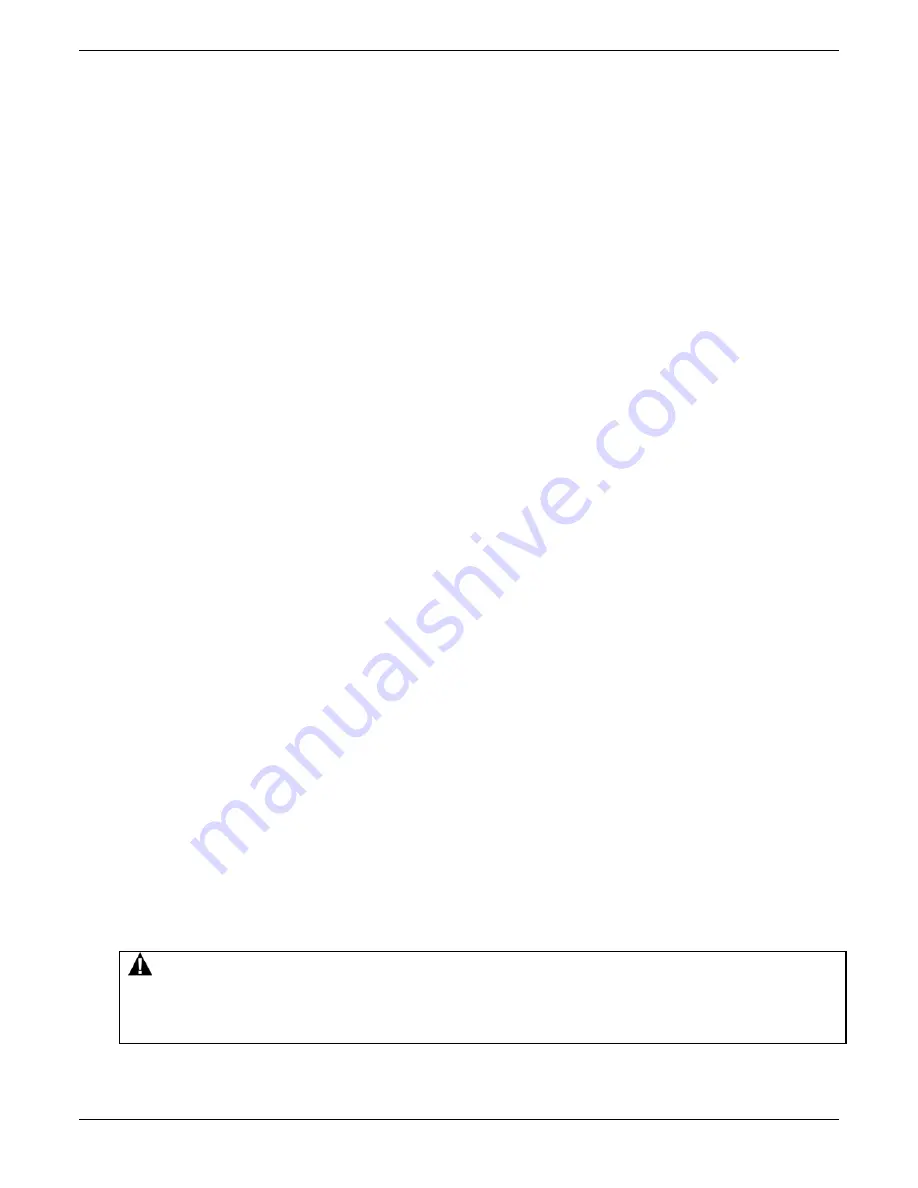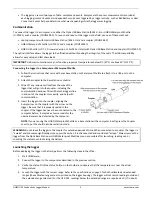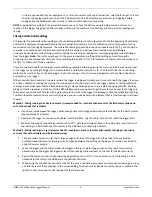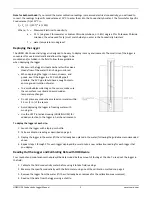
HOBO U24 Conductivity Logger Manual
6
onsetcomp.com
5.
Relaunch the logger.
6.
Clean the sensor (see
Maintenance
on page 6 for more details).
7.
Redeploy the logger in the stream, and take another calibration measurement.
Use HOBOware to calibrate data and convert to specific conductance or salinity
1.
Offload the most recent data files from the shuttle or loggers to your computer.
2.
Open a data file in HOBOware.
3.
Use the HOBOware Conductivity Assistant to calibrate the readings and adjust for drift caused by fouling. You will
need to enter the field meter readings and times from the beginning and, optionally, the end of that segment of the
logger’s deployment. Refer to the Help for the Conductivity Assistant for more details. Save your changes to a
project file.
4.
Repeat steps 1 through 3 for all data files.
Maintenance
The logger requires the following periodic maintenance to ensure optimal operation:
•
Clean the sensor.
Mix several drops of dish detergent or biodegradable soap in a cup of tap water with a clean
cotton swab. Clean the sensor face using the cotton swab and then rinse the sensor with clean or distilled water. Do
not scratch the sensor face with a sharp tool.
•
Check for biofouling.
Biofouling and excessive marine growth on the logger will compromise accuracy. Organisms
that grow on the sensor can interfere with the sensor’s operation and eventually make the sensor unusable. If the
deployment area is prone to biofouling, check the logger periodically for marine growth.
•
Be careful of solvents.
Check a materials compatibility chart before deploying the logger in locations where
untested solvents are present. Refer to the specifications for wetted housing materials on page 1.
Battery Guidelines
•
Battery Life.
The battery life of the logger should be three years or more. Actual battery life is a function of the
number of deployments, logging interval, and operation/storage temperature of the logger. Frequent deployments
with logging intervals of less than one minute, continuous storage/operation at temperatures above 35°C (95°), and
keeping the logger connected to the coupler will result in significantly lower battery life. For example, continuous
logging at a one-second logging interval will result in a battery life of approximately one month.
To obtain a three-year battery life, a logging interval of one minute or greater should be used and the logger should
be operated and stored at temperatures between 0° and 25°C (32° and 77°F).
•
Battery Voltage.
The logger can report and log its battery voltage. If the battery falls below 3.1 V, the logger will
record a “bad battery” event in the datafile. If the datafile contains “bad battery” events, or if logged battery
voltage repeatedly falls below 3.3 V, the battery is failing and the logger should be returned to Onset for battery
replacement. Note that the logger does not have to be recording the battery channel for it to detect bad battery
events. The logger will record these events regardless of what channels are logged.
•
Replacing the Battery.
To have your logger’s battery and sensor replaced, contact Onset or your place of purchase
for return arrangements. Do not attempt to replace the battery yourself. Severe damage to the logger will result if
the case is opened without special tools, and the warranty will be voided.
WARNING:
Do not cut open, incinerate, heat above 100°C (212°F), or recharge the lithium battery. The battery
may explode if the logger is exposed to extreme heat or conditions that could damage or destroy the battery
case. Do not dispose of the logger or battery in fire. Do not expose the contents of the battery to water.
Dispose of the battery according to local regulations for lithium batteries.




















